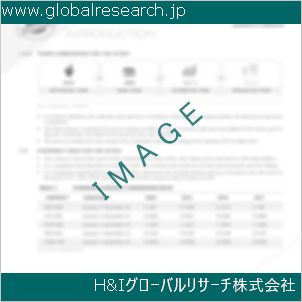Table of Contents
1 Industry Overview of Hydrazine
1.1 Definition and Specifications of Hydrazine
1.1.1 Definition of Hydrazine
1.1.2 Specifications of Hydrazine
1.2 Classification of Hydrazine
1.3 Applications of Hydrazine
1.3.1 Nuclear Application
1.3.2 Non-Nuclear Application
1.4 Industry Chain Structure of Hydrazine
1.5 Industry Overview and Major Regions Status of Hydrazine
1.5.1 Industry Overview of Hydrazine
1.5.2 Global Major Regions Status of Hydrazine
1.6 Industry Policy Analysis of Hydrazine
1.7 Industry News Analysis of Hydrazine
2 Manufacturing Cost Structure Analysis of Hydrazine
2.1 Raw Material Suppliers and Price Analysis of Hydrazine
2.2 Equipment Suppliers and Price Analysis of Hydrazine
2.3 Labor Cost Analysis of Hydrazine
2.4 Other Costs Analysis of Hydrazine
2.5 Manufacturing Cost Structure Analysis of Hydrazine
2.6 Manufacturing Process Analysis of Hydrazine
3 Technical Data and Manufacturing Plants Analysis of Hydrazine
3.1 Capacity and Commercial Production Date of Global Hydrazine Major Manufacturers in 2023
3.2 Manufacturing Plants Distribution of Global Hydrazine Major Manufacturers in 2023
3.3 R&D Status and Technology Source of Global Hydrazine Major Manufacturers in 2023
3.4 Raw Materials Sources Analysis of Global Hydrazine Major Manufacturers in 2023
4 Capacity, Production and Revenue Analysis of Hydrazine by Regions, Types and Manufacturers
4.1 Global Capacity, Production and Revenue of Hydrazine by Regions 2019-2024
4.2 Global and Major Regions Capacity, Production, Revenue and Growth Rate of Hydrazine 2019-2024
4.3 Global Capacity, Production and Revenue of Hydrazine by Types 2019-2024
4.4 Global Capacity, Production and Revenue of Hydrazine by Manufacturers 2019-2024
5 Price, Cost, Gross and Gross Margin Analysis of Hydrazine by Regions, Types and Manufacturers
5.1 Price, Cost, Gross and Gross Margin Analysis of Hydrazine by Regions 2019-2024
5.2 Price, Cost, Gross and Gross Margin Analysis of Hydrazine by Types 2019-2024
5.3 Price, Cost, Gross and Gross Margin Analysis of Hydrazine by Manufacturers 2019-2024
6 Consumption Volume, Consumption Value and Sale Price Analysis of Hydrazine by Regions, Types and Applications
6.1 Global Consumption Volume and Consumption Value of Hydrazine by Regions 2019-2024
6.2 Global and Major Regions Consumption Volume, Consumption Value and Growth Rate of Hydrazine 2019-2024
6.3 Global Consumption Volume and Consumption Value of Hydrazine by Types 2019-2024
6.4 Global Consumption Volume and Consumption Value of Hydrazine by Applications 2019-2024
6.5 Sale Price of Hydrazine by Regions 2019-2024
6.6 Sale Price of Hydrazine by Types 2019-2024
6.7 Sale Price of Hydrazine by Applications 2019-2024
6.8 Market Share Analysis of Hydrazine by Different Sale Price Levels
7 Supply, Import, Export and Consumption Analysis of Hydrazine
7.1 Supply, Consumption and Gap of Hydrazine 2019-2024
7.2 Global Capacity, Production, Price, Cost, Revenue, Supply, Import, Export and Consumption of Hydrazine 2019-2024
7.3 USA Capacity, Production, Price, Cost, Revenue, Supply, Import, Export and Consumption of Hydrazine 2019-2024
7.4 EU Capacity, Production, Price, Cost, Revenue, Supply, Import, Export and Consumption of Hydrazine 2019-2024
7.5 China Capacity, Production, Price, Cost, Revenue, Supply, Import, Export and Consumption of Hydrazine 2019-2024
7.6 Japan Capacity, Production, Price, Cost, Revenue, Supply, Import, Export and Consumption of Hydrazine 2019-2024
8 Major Manufacturers Analysis of Hydrazine
8.1 Manufacturer One
8.1.1 Company Profile
8.1.2 Product Picture and Specifications
8.1.2.1 Type I
8.1.2.2 Type II
8.1.2.3 Type III
8.1.3 Capacity, Production, Price, Cost, Gross and Revenue
8.1.4 Contact Information
8.2 Manufacturer Two
8.2.1 Company Profile
8.2.2 Product Picture and Specifications
8.2.2.1 Type I
8.2.2.2 Type II
8.2.2.3 Type III
8.2.3 Capacity, Production, Price, Cost, Gross and Revenue
8.2.4 Contact Information
8.3 Manufacturer Three
8.3.1 Company Profile
8.3.2 Product Picture and Specifications
8.3.2.1 Type I
8.3.2.2 Type II
8.3.2.3 Type III
8.3.3 Capacity, Production, Price, Cost, Gross and Revenue
8.3.4 Contact Information
8.4 Manufacturer Four
8.4.1 Company Profile
8.4.2 Product Picture and Specifications
8.4.2.1 Type I
8.4.2.2 Type II
8.4.2.3 Type III
8.4.3 Capacity, Production, Price, Cost, Gross and Revenue
8.4.4 Contact Information
8.5 Manufacturer Five
8.5.1 Company Profile
8.5.2 Product Picture and Specifications
8.5.2.1 Type I
8.5.2.2 Type II
8.5.2.3 Type III
8.5.3 Capacity, Production, Price, Cost, Gross and Revenue
8.5.4 Contact Information
…
9 Marketing Trader or Distributor Analysis of Hydrazine
9.1 Marketing Channels Status of Hydrazine
9.2 Traders or Distributors with Contact Information of Hydrazine by Regions
9.3 Ex-work Price, Channel Price and End Buyer Price Analysis of Hydrazine
9.4 Regional Import, Export and Trade Analysis of Hydrazine
10 Industry Chain Analysis of Hydrazine
10.1 Upstream Major Raw Materials Suppliers Analysis of Hydrazine
10.1.1 Major Raw Materials Suppliers with Contact Information Analysis of Hydrazine
10.1.2 Major Raw Materials Suppliers with Supply Volume Analysis of Hydrazine by Regions
10.2 Upstream Major Equipment Suppliers Analysis of Hydrazine
10.2.1 Major Equipment Suppliers with Contact Information Analysis of Hydrazine
10.2.2 Major Equipment Suppliers with Product Pictures Analysis of Hydrazine by Regions
10.3 Downstream Major Consumers Analysis of Hydrazine
10.3.1 Major Consumers with Contact Information Analysis of Hydrazine
10.3.2 Major Consumers with Consumption Volume Analysis of Hydrazine by Regions
10.4 Supply Chain Relationship Analysis of Hydrazine
11 Development Trend of Analysis of Hydrazine
11.1 Capacity, Production and Revenue Forecast of Hydrazine by Regions and Types
11.1.1 Global Capacity, Production and Revenue of Hydrazine by Regions 2024-2029
11.1.2 Global and Major Regions Capacity, Production, Revenue and Growth Rate of Hydrazine 2024-2029
11.1.3 Global Capacity, Production and Revenue of Hydrazine by Types 2024-2029
11.2 Consumption Volume and Consumption Value Forecast of Hydrazine by Regions, Types and Applications
11.2.1 Global Consumption Volume and Consumption Value of Hydrazine by Regions 2024-2029
11.2.2 Global and Major Regions Consumption Volume, Consumption Value and Growth Rate of Hydrazine 2024-2029
11.2.3 Global Consumption Volume and Consumption Value of Hydrazine by Types 2024-2029
11.2.4 Global Consumption Volume and Consumption Value of Hydrazine by Applications 2024-2029
11.3 Supply, Import, Export and Consumption Forecast of Hydrazine
11.3.1 Supply, Consumption and Gap of Hydrazine 2024-2029
11.3.2 Global Capacity, Production, Price, Cost, Revenue, Supply, Import, Export and Consumption of Hydrazine 2024-2029
11.3.3 USA Capacity, Production, Price, Cost, Revenue, Supply, Import, Export and Consumption of Hydrazine 2024-2029
11.3.4 EU Capacity, Production, Price, Cost, Revenue, Supply, Import, Export and Consumption of Hydrazine 2024-2029
11.3.5 China Capacity, Production, Price, Cost, Revenue, Supply, Import, Export and Consumption of Hydrazine 2024-2029
11.3.6 Japan Capacity, Production, Price, Cost, Revenue, Supply, Import, Export and Consumption of Hydrazine 2024-2029
12 New Project Investment Feasibility Analysis of Hydrazine
12.1 New Project SWOT Analysis of Hydrazine
12.2 New Project Investment Feasibility Analysis of Hydrazine
13 Conclusion of the Global Hydrazine (CAS 302-01-2) Industry 2024 Market Research Report
| ※参考情報 ヒドラジンは化学式 N2H4 で表される無色、香りのある液体で、CAS番号は 302-01-2 です。主に燃料や化学工業の原材料として利用されています。ヒドラジンは、二つのアミン基を持つ簡単な窒素化合物であり、化学的には非常に反応性が高く、強い還元剤として知られています。 ヒドラジンの特徴として、分子構造が非常にシンプルであることが挙げられます。分子内には二つの窒素原子があり、それらが二重結合でつながっています。ヒドラジンの水溶性は比較的高く、アルコールやエーテルなどの有機溶媒とも混合することが可能です。また、沸点は約113°C、融点は約-2°Cであり、常温下では液体の状態で存在します。ヒドラジンは強い刺激臭を持ち、そのため取り扱いには注意が必要です。 ヒドラジンの種類にはいくつかの同族体が存在し、いくつかの誘導体もあります。たとえば、ヒドラジンの誘導体としては、ジメチルヒドラジン(DMMH)、モノメチルヒドラジン(MMH)などがあります。これらは事業用途に応じて特定の特性を持ち、特に推進剤や燃料としての利用が進められています。たとえば、ジメチルヒドラジンはロケット燃料として多く用いられます。このため、ヒドラジンとその誘導体は航空宇宙分野で非常に重要です。 用途としては、ヒドラジンは主に燃料や推進剤、または化学合成の中間体として利用されています。特に、宇宙ロケットの立ち上げや衛星の推進においては、ヒドラジンが重要な役割を果たしています。ヒドラジンを用いることで高いエネルギー密度を持つ推進が可能であり、推進剤の選択肢の中でも効果的とされています。また、燃焼後の残留物が少ないことから、宇宙空間での利用にも適しています。 さらに、ヒドラジンは化学合成にも広く利用されており、医薬品や農薬の合成において重要な中間体として役立っています。特に、ヒドラジンはアミン化反応において使われることが多く、さまざまな有機化合物の合成に寄与しています。このため、化学産業におけるヒドラジンの需要は非常に高い状況にあります。 関連技術としては、ヒドラジンを取り扱う際の安全性や環境への配慮が重要視されています。ヒドラジンは毒性があり、吸入や皮膚接触により健康に悪影響を及ぼす可能性があるため、取り扱いの際には適切な防護策が必要です。たとえば、作業環境の換気や、保護具の着用が求められます。また、ヒドラジンを使用したプロセスや反応においては、発火や爆発のリスクがあるため、これらを防ぐための安全対策が不可欠です。 最近では、環境負荷を減少させるための研究も進んでおり、ヒドラジンの代替品や、より安全な取り扱い方法についての開発が進められています。例えば、より環境に優しい還元剤や推進剤の研究が行われ、持続可能な化学産業の確立を目指す動きが強まっています。 総じて、ヒドラジンはその特性から、宇宙産業や化学製品の合成において重要な役割を果たしている一方で、その危険性も考慮しなければならない化学物質です。今後の研究や技術革新によって、より安全で効率的な利用方法が確立されることが期待されます。ヒドラジンを利用する際には、各種の取り扱いや安全に関するガイドラインを遵守し、その性質を理解した上での活用が求められます。そのためには、教育や訓練も非常に重要な要素と言えるでしょう。 以上のように、ヒドラジンは多くの特徴や用途がある一方で、安全性についても十分な配慮が必要な化学物質であることがわかります。今後の発展に期待が寄せられる分野です。 |
❖ 免責事項 ❖
http://www.globalresearch.jp/disclaimer












